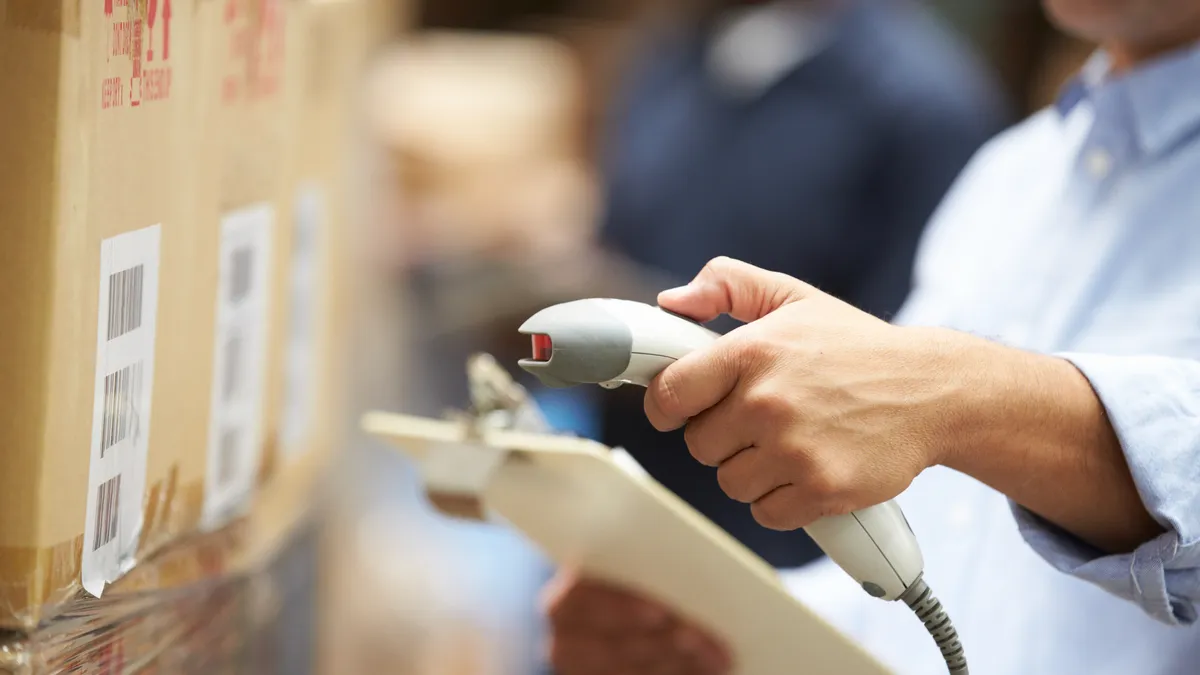Dive Brief:
- UPS introduced new and updated technology to support workers dealing with peak season workloads. One, called Dynamic Sort Instruction, relies on Bluetooth audio to direct sorting facility staff where to route packages, a UPS press release reported Wednesday.
- Carrying a cell-phone sized device complete with earbuds, workers hear processing instructions as they scan in packages, eliminating the need for zip code memorization and speeding training.
- The second device, called Mobile Delivery App, serves drivers by showing delivery locations, sorting delivery stops by distance, allowing recipients to sign for packages with just a finger and allowing for route downloads no matter the distance from a UPS resource.
Dive Insight:
Logistics is generally a technology "early adopter," filling a void left by too few workers in a rapidly expanding industry.
Warehouses are now home to drones, which read RFID tags to help manage inventory, as well as robots, which can either function independently or in concert with human counterparts. Amazon is particularly reliant on robots, though the cost of maintaining warehouses and fulfillment centers rises significantly with their deployment.
Technology may be more welcome in logistics than other fields in part due to the dearth of available and suitably skilled workers. Though millennials are sometimes seen as key to filling the employment void in manufacturing, piquing their interest is challenging for an older generation less enamored of social media and gadgets. But technology-friendly work environments may lure more millennials to apply.
“In the supply chain market, technology can assist in several ways," Ross Elliott, president of TrueCommerce, an e-commerce and EDI software company, told Supply Chain Dive. "One: it can increase the productivity of existing employees by guiding decision making, simplifying processes and augmenting the employees' natural capabilities."
In other words, technology helps refine skills in a rapid manner.
"Two: technology can accelerate the onboarding process of new employees through guided learning and familiar tools to improve their time to value," he said.
Time spent in training is significantly reduced, benefiting both employee and employer.
"Three: with the advent of connected devices, like IoT and robotics, it can supplement the workforce and assume some of the more repetitive tasks and monitoring functions necessary to supply chain success," he said.
Technology can assume the burden of monotonous tasks, freeing human workers for more complex and challenging tasks.












